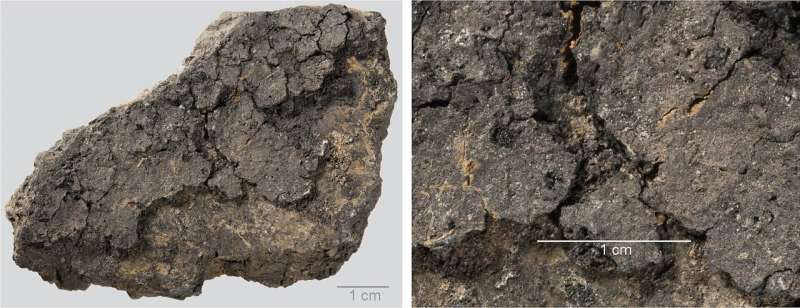This article has been reviewed according to Science X's editorial process and policies. Editors have highlighted the following attributes while ensuring the content's credibility:
fact-checked
peer-reviewed publication
trusted source
proofread
A peek into the cooking pot: Burnt food remains document 5,000-year-old food preparation

Researchers from the Collaborative Research Center (CRC) 1266 at Kiel University (CAU) have been able to prove, in the first archaeobotanical study of burnt food residues on the surface of ceramic vessels, how varied the meals prepared in Eastern Holstein 5,000 years ago were.
The study, published in PLOS ONE shows that both cereals and wild plants played a major role.
The analyzed ceramic vessels come from one of the oldest villages in Schleswig-Holstein, the Neolithic settlement Oldenburg LA 77 in Ostholstein. Using scanning electron microscopy and chemical analysis, a sophisticated preparation of plant-based foodstuffs was identified.
"The 'food crusts' contained tissue remnants of emmer and barley grains, as well as seeds from the white goosefoot, a wild plant that grows as a weed and ruderal plant and produces many starchy seeds," explains Professor Wiebke Kirleis, head of the study in the CRC 1266.
"Charred grains and chaff from emmer and barley, as well as seeds from white goosefoot, have already been documented by archaeobotanical analyses of soil samples from this Neolithic settlement," adds Dr. Dragana Filipović, research associate at the CRC 1266.
Milky ripe cereals and wild plants provided variety
The new findings show that cereals indeed played an important dietary role and that wild plants enriched the food spectrum of the earliest farmers in the north. The barley was harvested when milky ripe and prepared in a similar way to the green spelt traditionally produced in Baden-Württemberg. The emmer was processed in a sprouted state, which gave the porridge a sweet flavor.
Food in the Neolithic Age was therefore by no means bland, but rather varied. People had a highly differentiated sense of taste and attached great importance to good flavor.
So far, chemical analyses of the pottery have shown that the vessels contained dairy products. A look at the crusts burnt onto the cooking pot now shows that cereals and dairy products were probably processed into porridge for everyday use in the same vessels and formed a balanced dietary basis.
"While the animal fats are absorbed into the ceramic and leave a signal there, the plant food components can only be detected in the burnt food crust," says Dr. Lucy Kubiak-Martens, cooperation partner of BIAX Consult (Netherlands) and first author of the study.
This shows how important a multi-method approach is for reconstructing Neolithic recipes created from a variety of ingredients. These discoveries expand our understanding of the long and complex process of transforming plants into meals during the period that followed the introduction of the agricultural way of life and cultivated plants in north-central Europe.
More information: Lucy Kubiak-Martens et al, Transformation of cereal grains: Botanical and chemical analysis of food residues encrusted on pottery from the Funnel Beaker settlement of Oldenburg LA 77, northern Germany, PLOS ONE (2024). DOI: 10.1371/journal.pone.0296986
Journal information: PLoS ONE
Provided by Kiel University



















